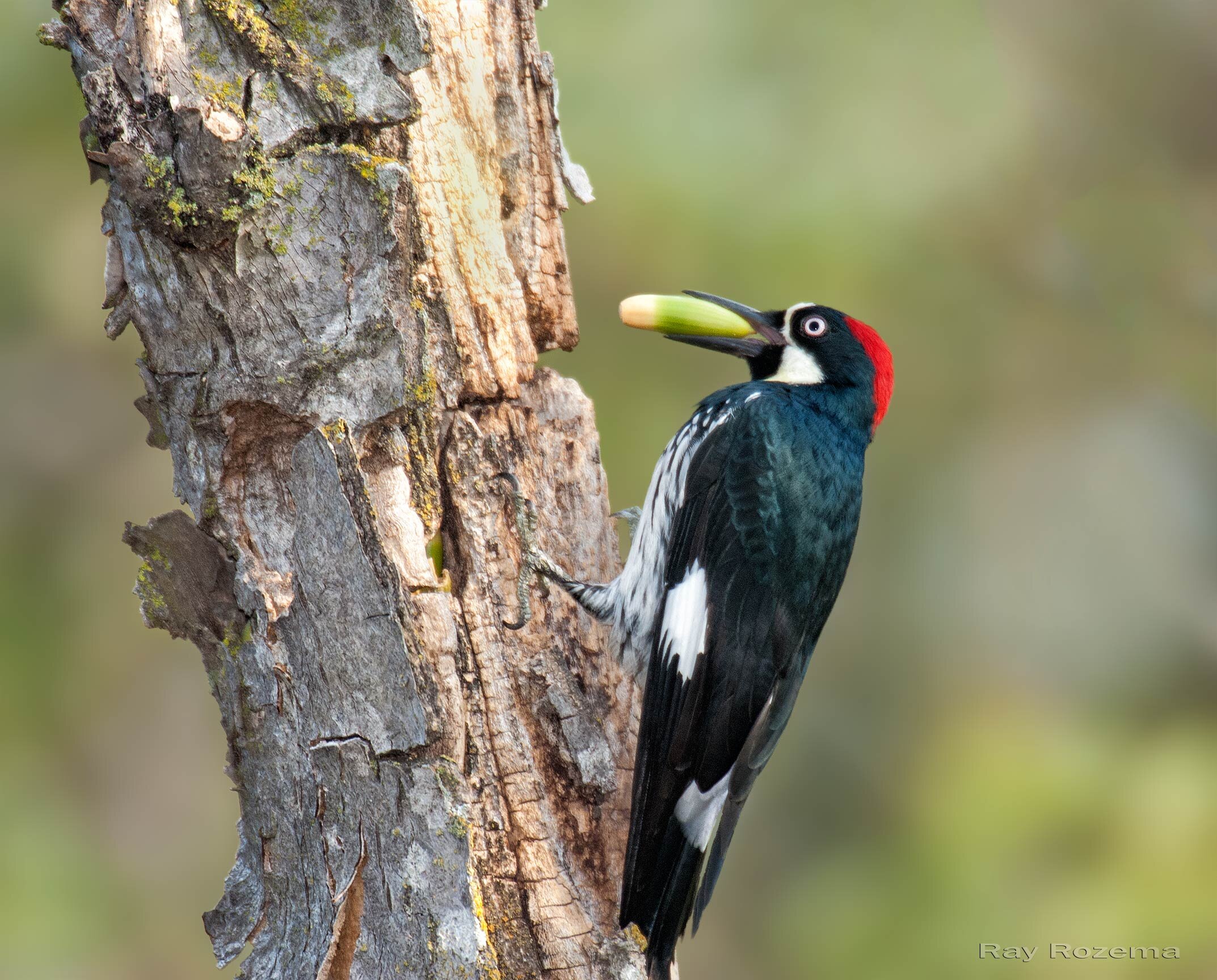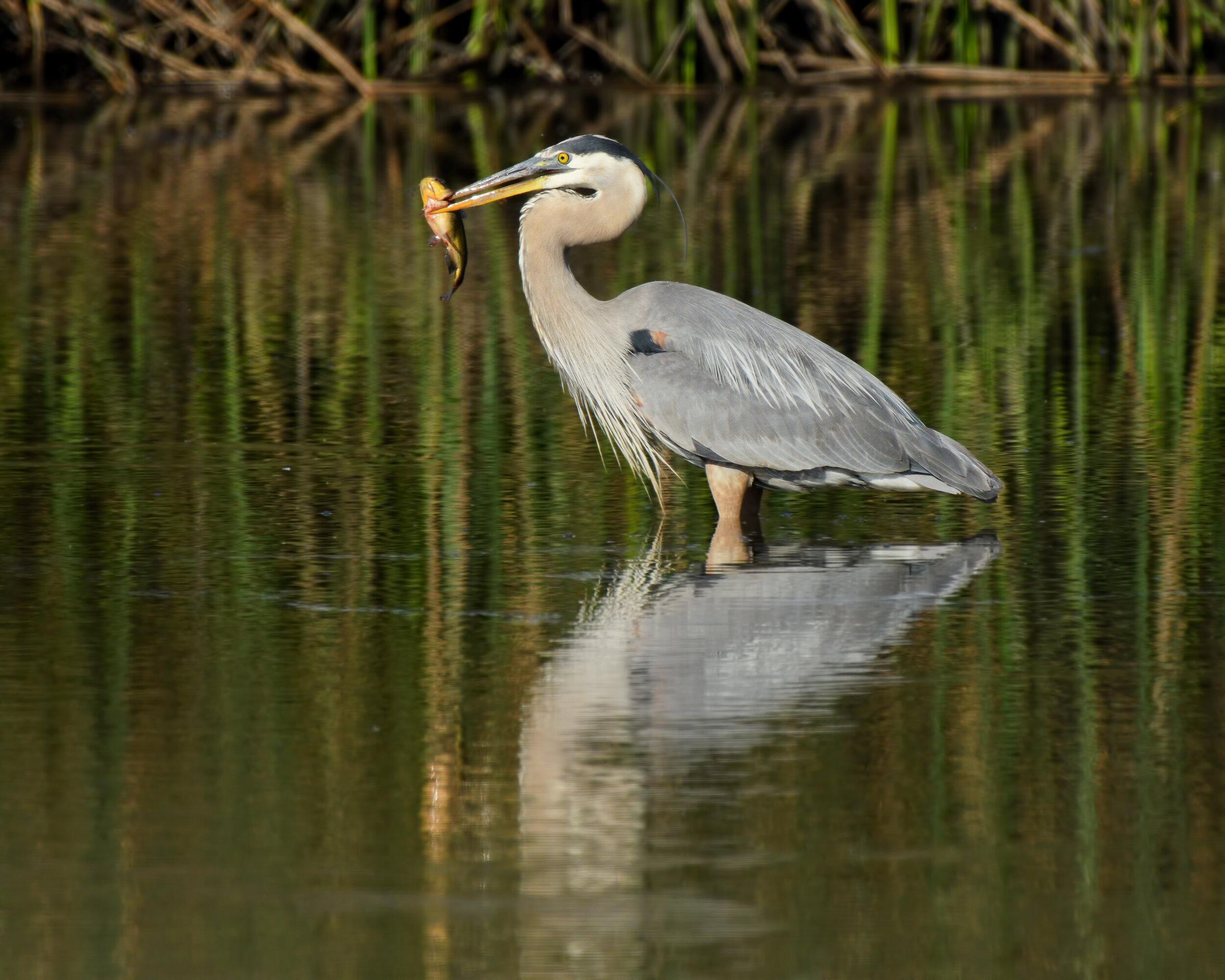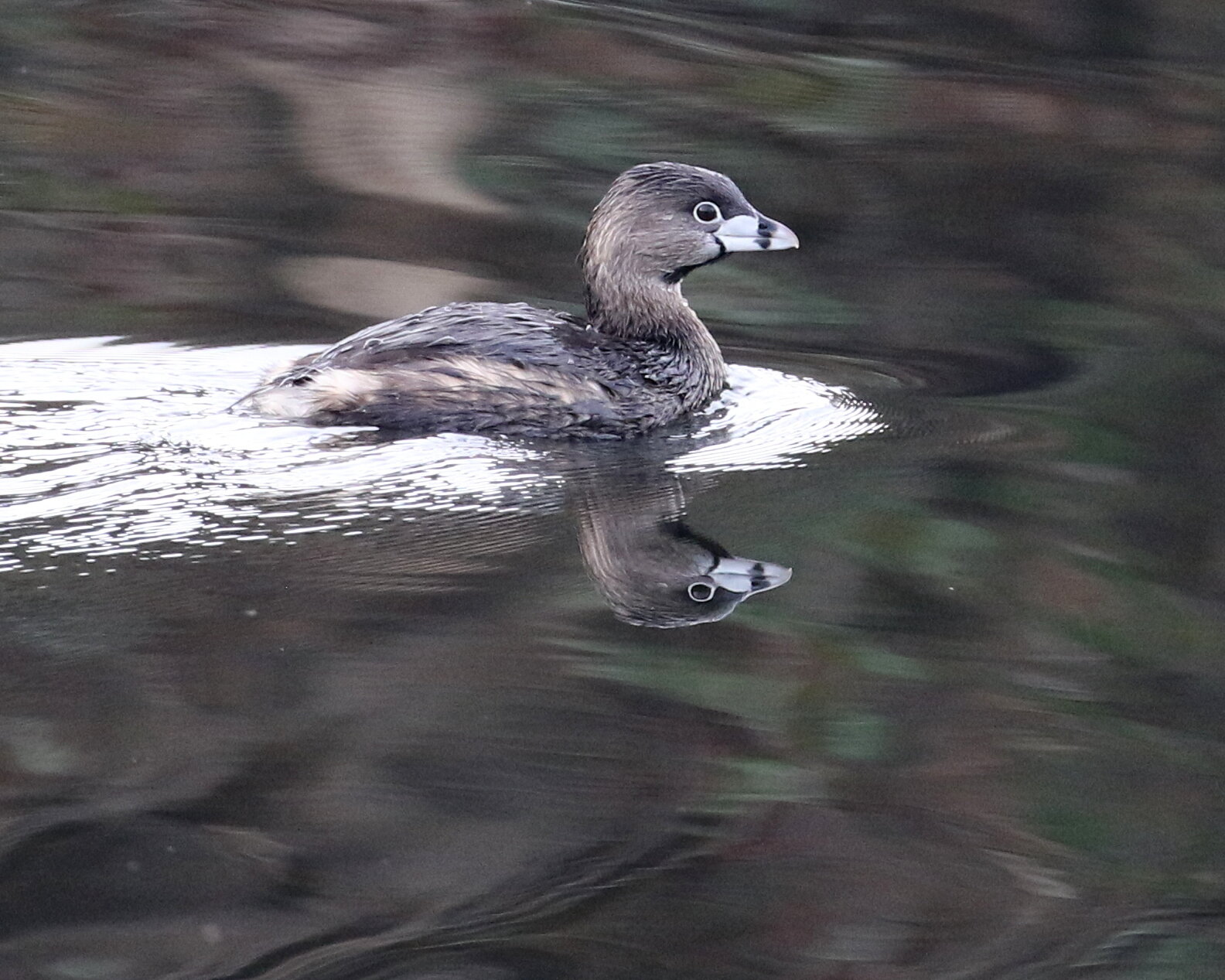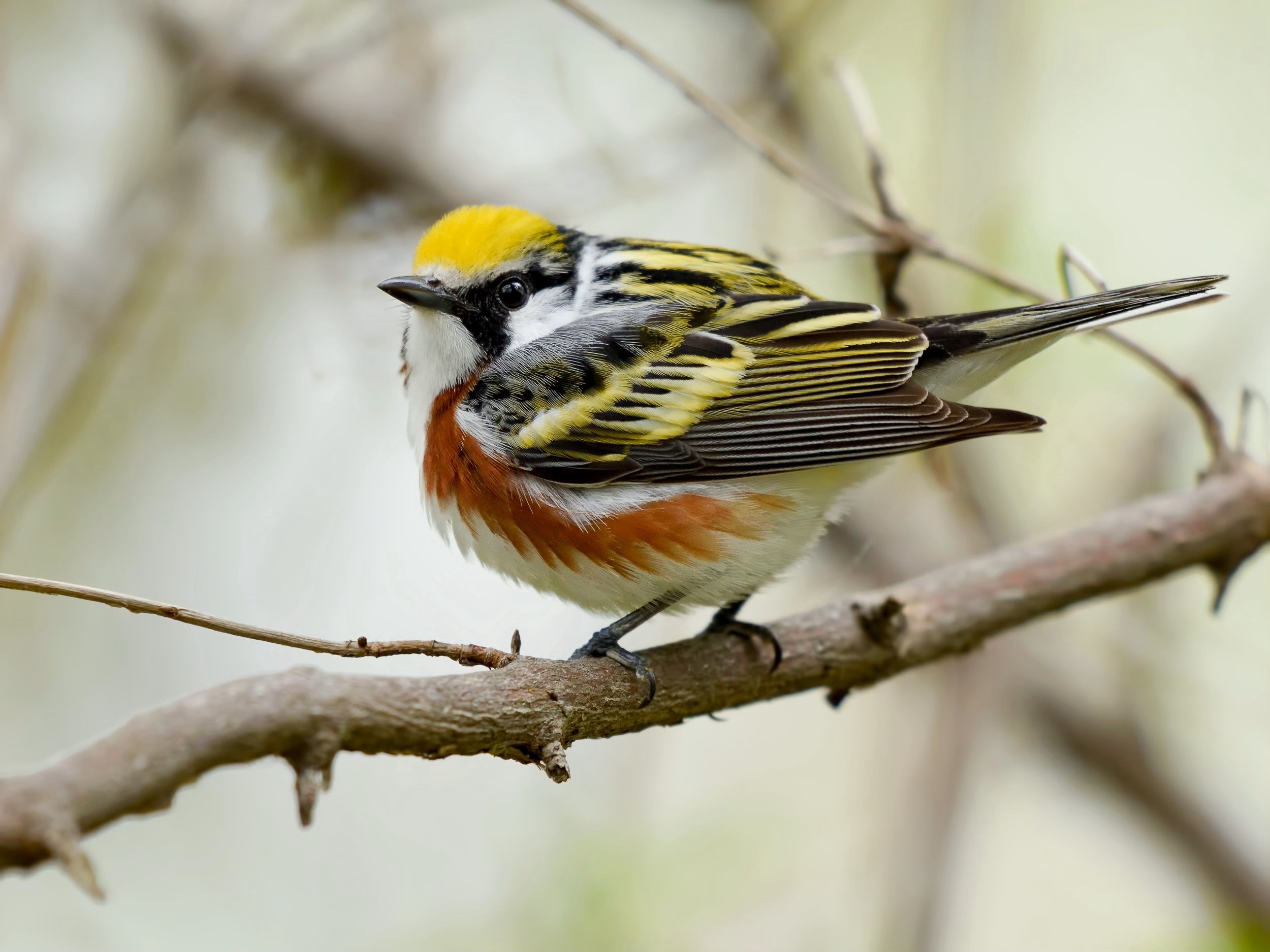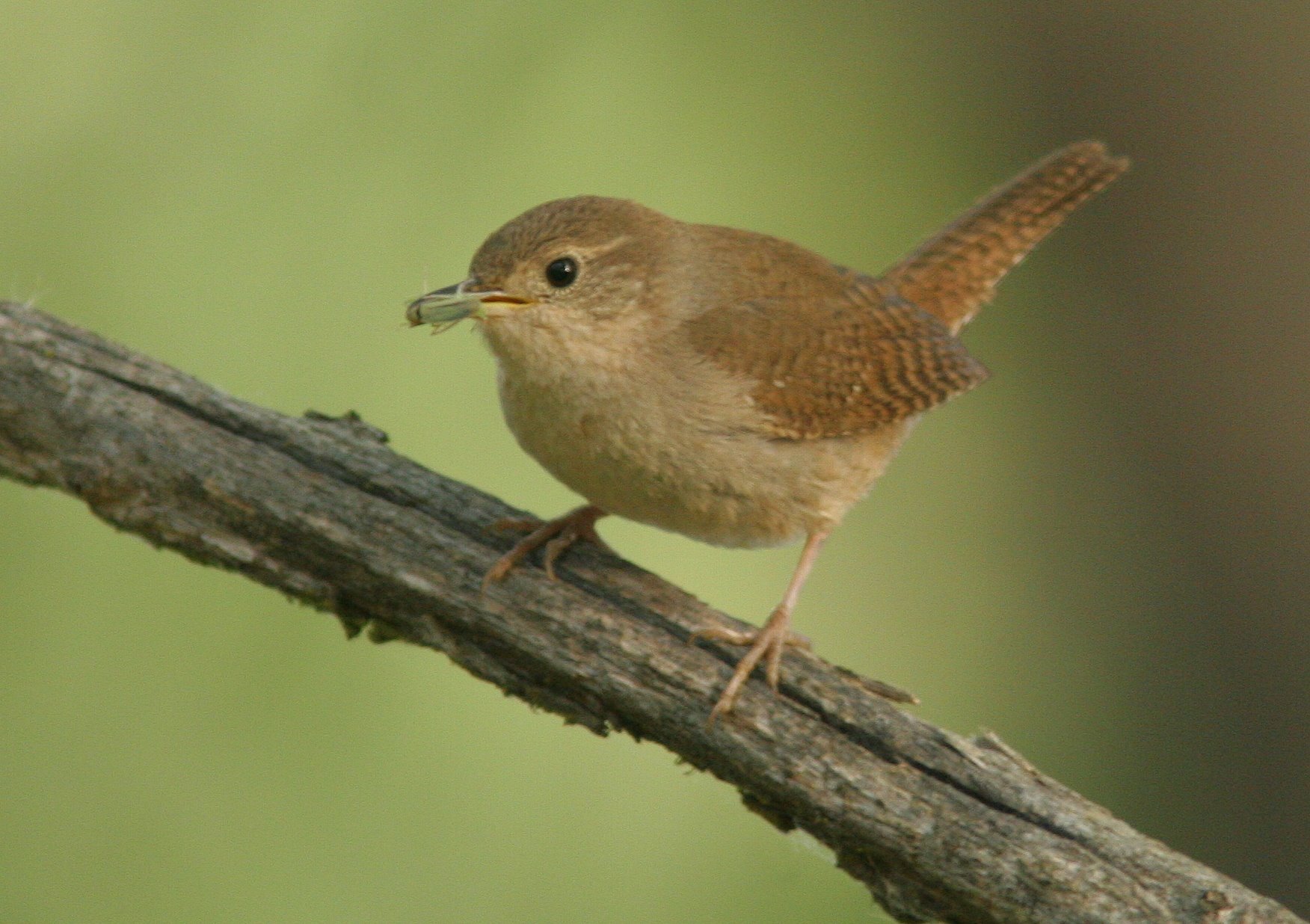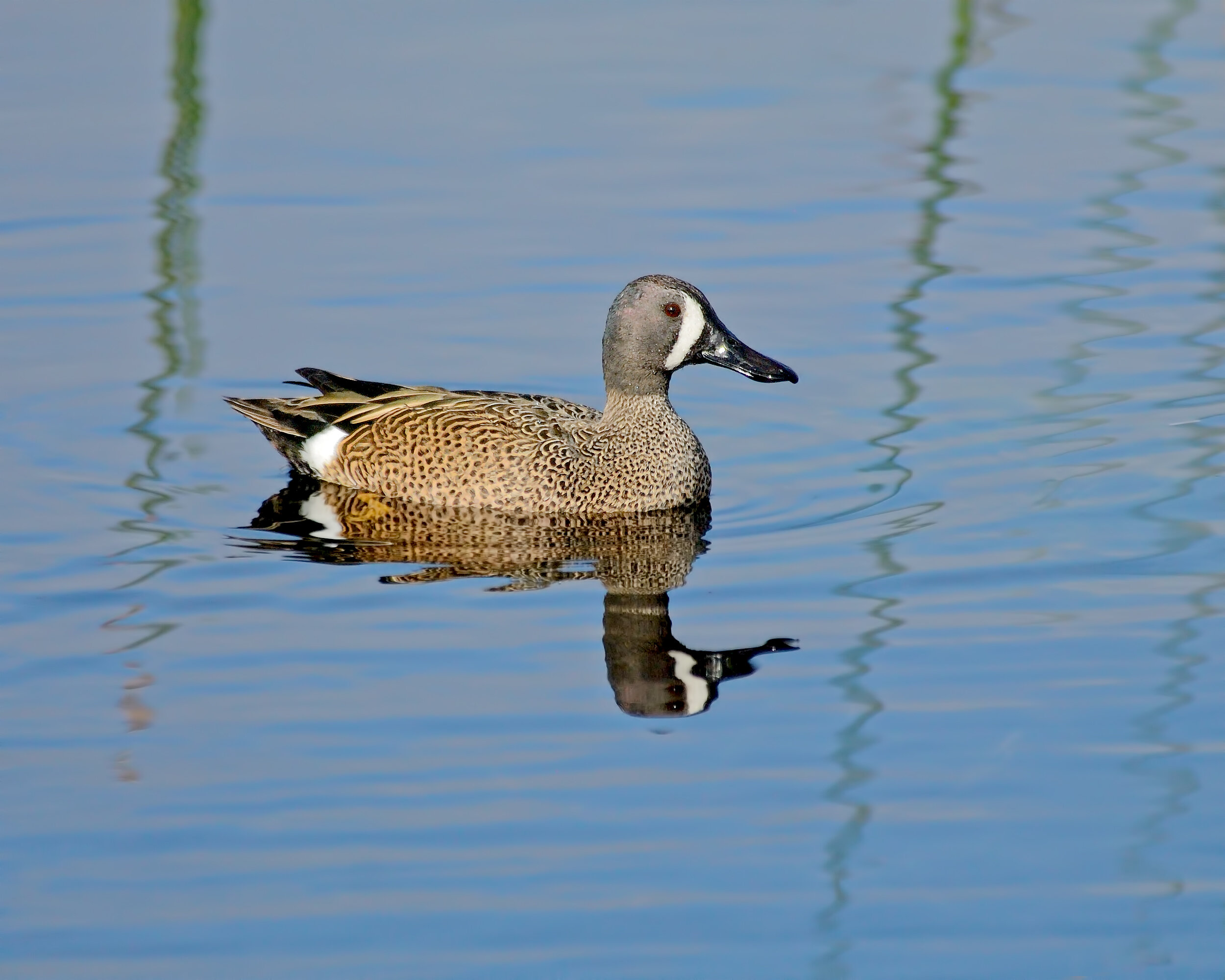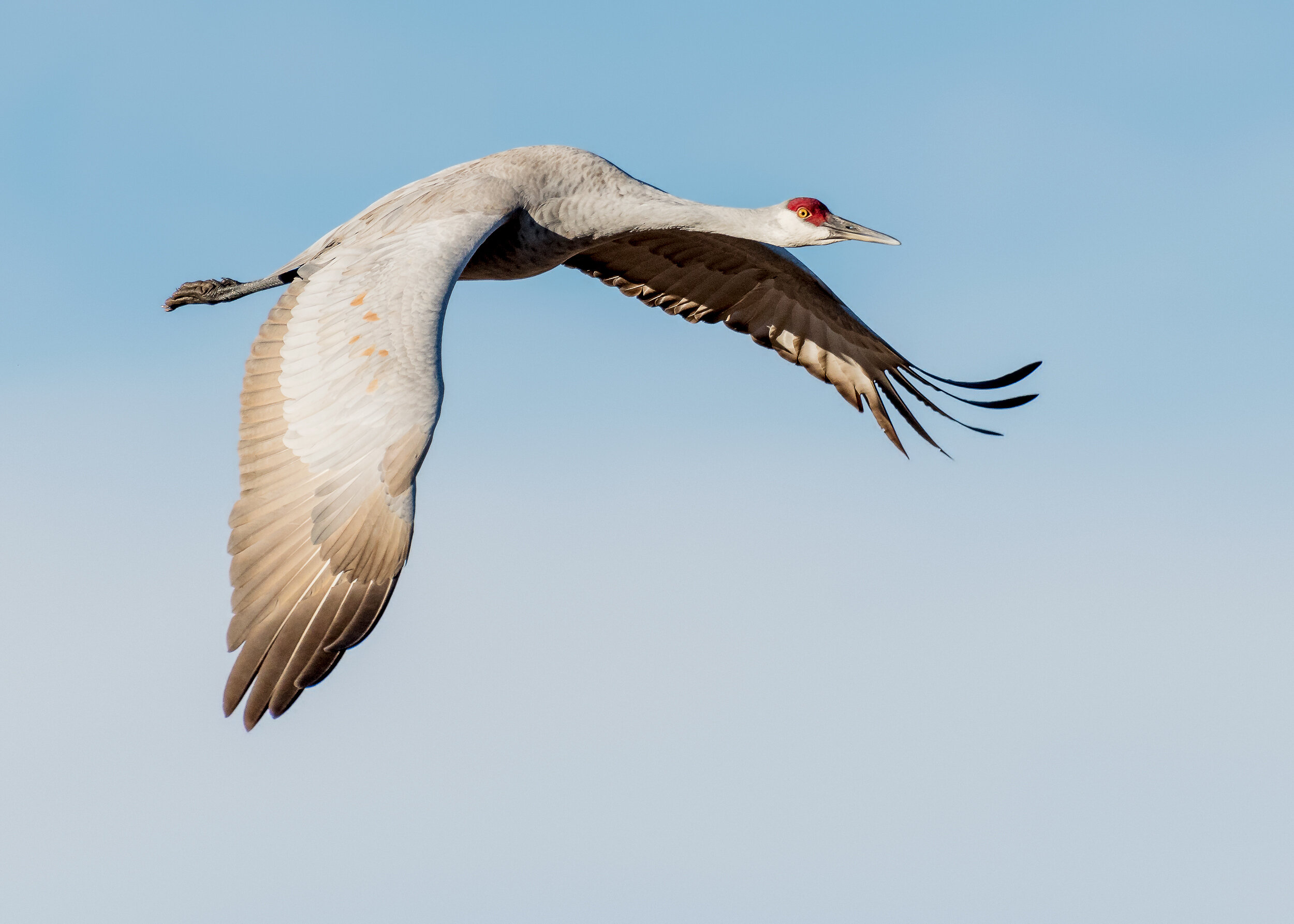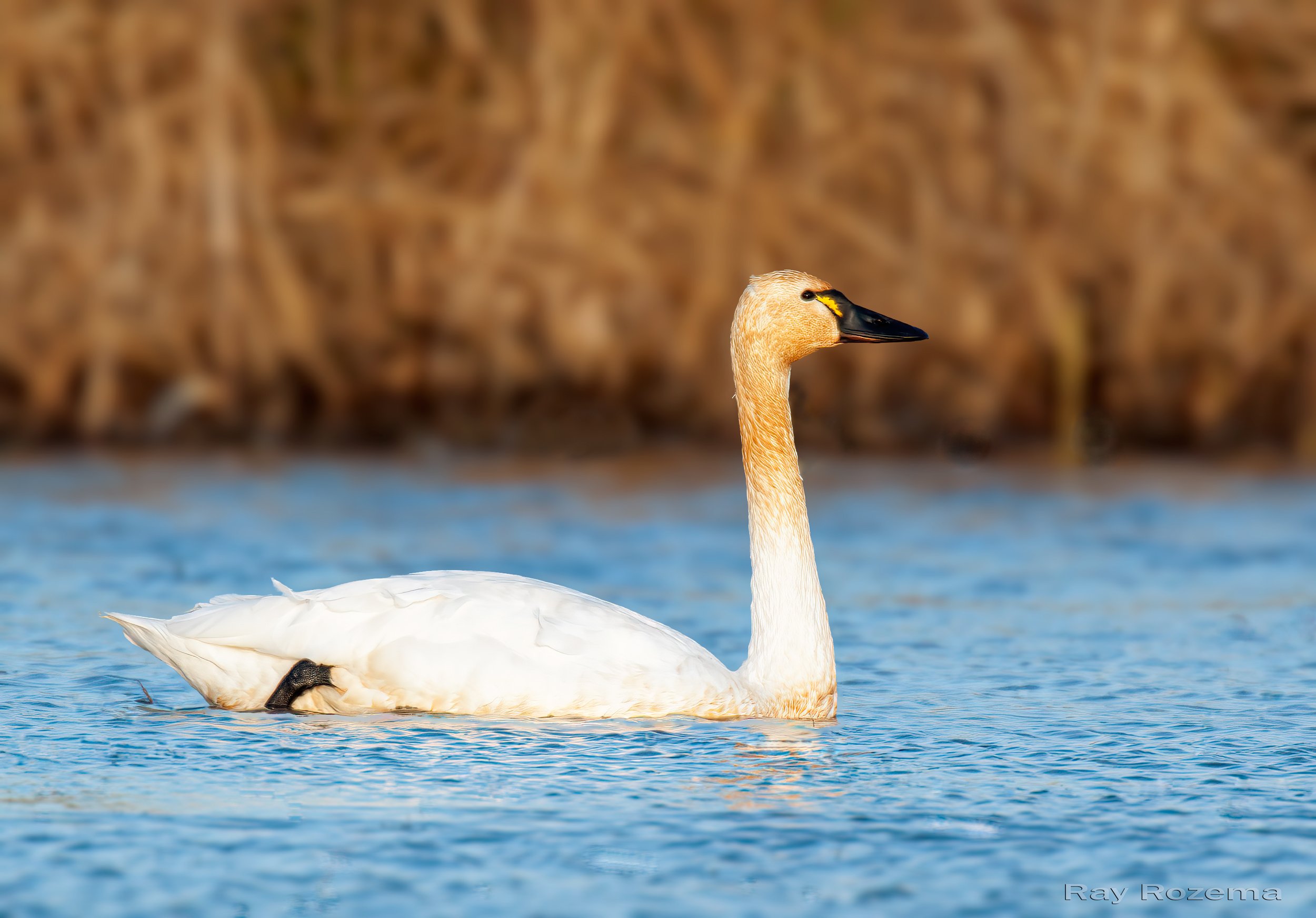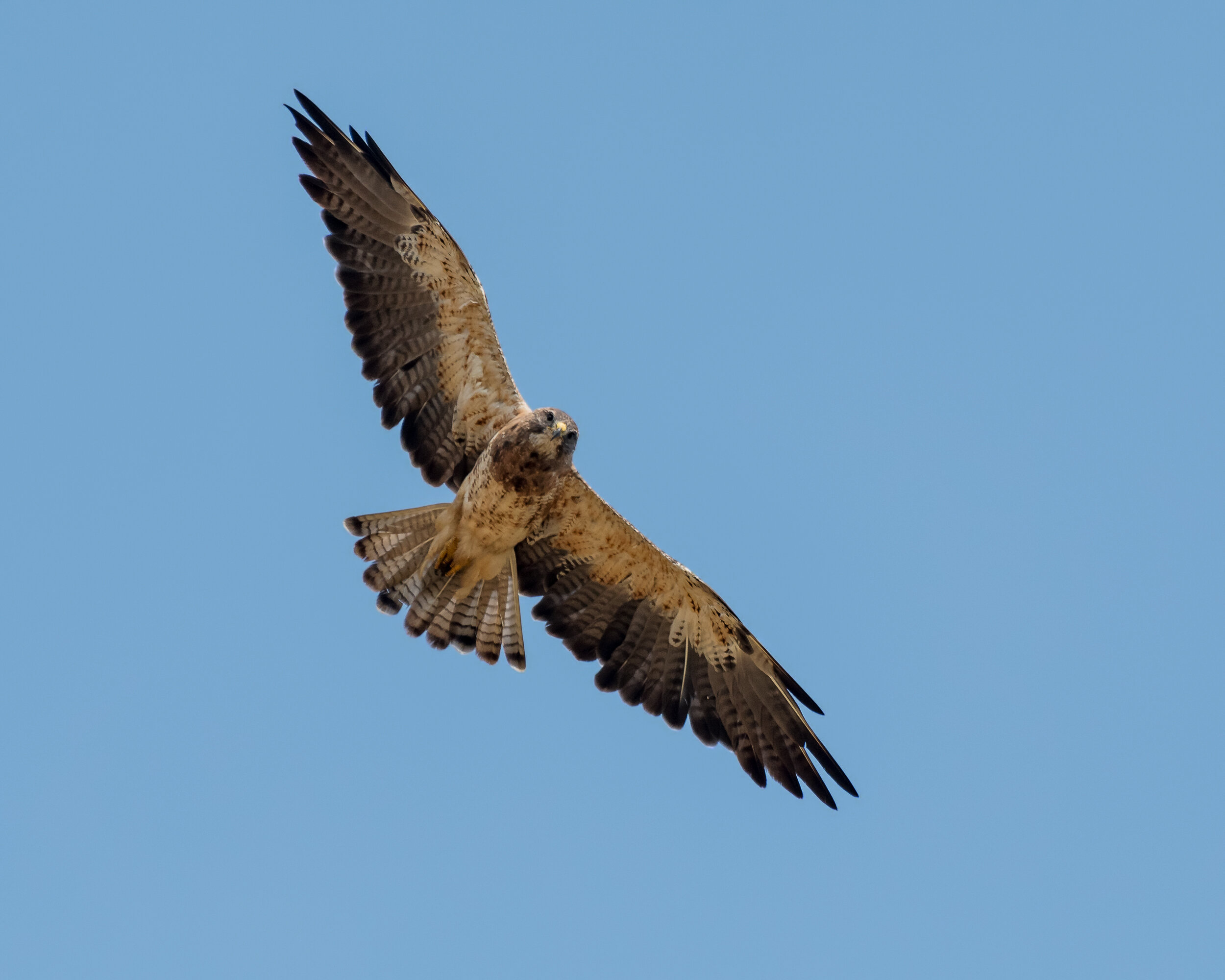FALL
With fall, we say goodbye to our summer residents and watch with eager anticipation for fall migrants and the first arrivals of overwintering species. Warblers passing through will have us searching the trees. Ducks and geese will soon flood the fields and ponds. Sparrows and kinglets will become our familiar friends again. While the color of some of the birds may be a little more drab than in the spring, we welcome our returning friends all the same. Here are some wonderful areas to go birding in the fall.
An interactive map of these locations can be found here or at the bottom of this page.
The main Chinook salmon run begins in October, and hundreds of gulls as well as large numbers of Turkey Vultures arrive to feed on the dying fish. This feast may bring in an occasional Bald Eagle. Ospreys are also often seen in winter along with flocks of Common Goldeneye, Common Merganser and the occasional Barrow’s Goldeneye.
Walk the trails along the river and you may find Spotted Sandpipers, Greater Yellowlegs, Great Blue Herons, and Great Egrets hunting at the water's edge while Wood Ducks and Common Mergansers float along. Black Phoebes, Bushtits, and Acorn Woodpeckers are seen year-round. In the spring and summer, Ash-throated Flycatchers, Western Kingbirds, and Bullock's and Hooded orioles are all possibilities.
In the fall and spring, migrating songbirds such as Townsend’s, Hermit, Nashville, and Wilson’s warblers, as well as Bullock’s Orioles, and Black-headed Grosbeak may be spotted. In winter, California, American Herring, and Ring-billed gulls are the most common species. One might also see less common Glaucous-winged, Iceland, or Short-billed gulls.
More than 70 acres of riparian woodland adjacent to the Effie Yeaw Nature Center (EYNC) have been preserved as a nature study area within the American River Parkway. Because this birding spot is easy to reach and includes a variety of habitats, it is possible to sight more than 100 species during the course of a year. In the spring, migrating warblers move through the woods. The crowned sparrows return each fall, and winter brings the goldeneyes back to the river.
River Bend Park has a variety of habitats with trails throughout. You can walk along the American River in search of goldeneyes or sandpipers; search the woods for woodpeckers, sparrows, and wrens; or explore the open areas for raptors soaring in the sky and hummingbirds flitting among the bushes.
Known for its diverse habitats, William B. Pond has fast flowing water where riffles and gravel bars are present, sandy riverbanks, riparian woodlands, a nesting rookery, open areas and woodlands edges, plus a wonderful urban park. All these habitats draw in a great variety of birds making it one of the most popular birding locations along the American River Parkway.
An amazing number of rarities have been found here in the spring and fall: Eastern Wood-Pewee, Red-eyed Vireo, Northern Parula, and Chestnut-sided, Blackburnian, Bay-breasted, Blackpoll, Black-and-white, and Hooded warblers, and Rose-breasted Grosbeak.
Throughout the year informal trails provide access to the riparian forest. In the winter this is a good area for sparrows and wrens. During spring and fall migration, look for warblers, vireos, and flycatchers in the oaks, willows, and cottonwoods.
The trail around the park is at its best during spring and fall migration with large numbers of sparrows, warblers, and kinglets in the canopy and on the ground.
The more than 45,000 acres around the Cosumnes River that make up the Cosumnes River Preserve have been designated as a Globally Important Bird Area with more than 300 species recorded.
This year-round pond in West Sacramento near the eastern edge of the Yolo Causeway is one of the best places in California to see Blue-winged Teal each fall and winter. Additionally year-round resident Black-necked Stilts and American Avocets breed here in the spring.
This Global-Priority Level Important Bird Area now contains more than 25,000 acres and is just minutes from downtown Sacramento. Both seasonal and permanent wetlands are present as well as riparian woodland and valley grassland, providing habitat for a large variety of birds.
These two sites just west of the Sacramento River make for an excellent morning of birding in the spring and fall. When there is a good pulse of migrants, the woods can be hopping with warblers and other songbirds.
The University of California, Davis Arboretum has produced excellent rarities (notably Scissor-tailed Flycatcher and Red Crossbills) in addition to Red-breasted Nuthatches and Chestnut-backed Chickadees in the appropriate season as well as a rookery of Black-crowned Night Herons, Snowy Egrets, and Western Cattle Egrets.
This vital remnant of riparian habitat has become a haven for warblers, flycatchers and other migrating passerines in the spring and fall.
This evolving wetland consists of 400 acres of ponds and upland habitat of varying depths and is a continuation of Davis’s storm water and wastewater treatment process. The Wetlands are only open to the public during limited times during the year. From February 15th through August 31st, the wetlands are open seven days/week from 7 a.m. to 1 p.m. From September 1st through February 15th, the wetlands are open Mondays only from 7 a.m. to 1 p.m.
The treatment ponds at this location have a fine history of attracting good shorebirds, gulls, and waterfowl. The peak season for finding rare shorebirds is from July through September, depending on water levels. Good numbers of shorebirds and gulls can be found in the winter, and spring migration can be productive as well.
Adjacent to Folsom Lake, Falcon Crest sits on a peninsula on the south side of Folsom Lake and consists of pine and oak woodlands, grasslands and extensive lake floodplains. Falcon Crest makes for a wonderful couple hours of birding. If you’d like to combine a trip to Falcon Crest with other stops along the east side of Folsom Lake be sure to check out the Folsom Point to Sweetwater Creek information.
A walk through the sanctuary is a delight in any season. Over 200 species of birds have been recorded. In summer, Swainson’s Hawk soar overhead. Great Horned Owl is common here. Wood Duck, herons, egrets, and Pied-billed Grebe can be found year-round. Springtime brings a variety of warblers as well as nesting Western Bluebird, Bullock’s Oriole, and Black-headed Grosbeak. In winter, sparrows, towhees, kinglet, Yellow-rumped Warbler, and Northern Flicker are among the common birds.
This is one of the most accessible areas to observe large numbers of Sandhill Cranes. From October to March, many fields in this area are flooded and filled with Sandhill Cranes, wintering shorebirds, and waterfowl.
Staten Island is an excellent site for viewing large numbers of Sandhill Cranes, geese, Tundra Swans, other waterfowl, and shorebirds.
This magnet for birds on the Solano-Yolo County line is formed by a small diversion dam on Putah Creek several miles east of Lake Berryessa and the Vaca Mountains, the easternmost ridge of the North Coast Ranges. For best birding, visit the area early in the morning; fall and winter are most productive, due to the arrival of winter visitors.

To use the map above, click on any icon. You’ll find the name and a brief description with a link to additional information. Alternatively, you can click on the square with an arrow in the upper left hand corner of the map to open a complete list of all the locations on this map. The map is easier to use if you enlarge it by clicking on the partial square in the top right portion of the map (hover your cursor over the partial square and it will say “View larger map”).
Banner Photo Credit: Acorn Woodpecker by Ray Rozema

